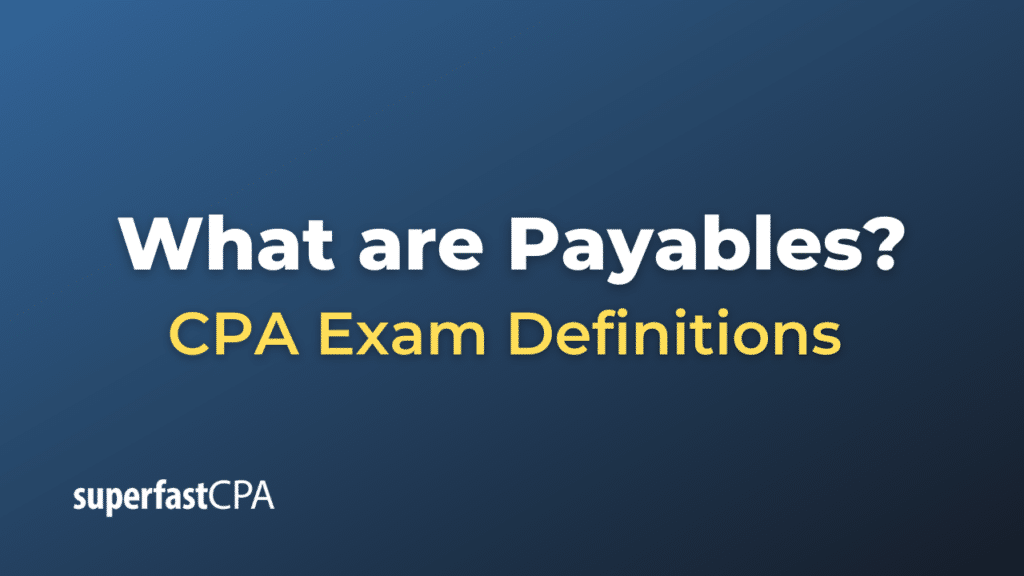Payables
Payables, often referred to as accounts payable, are a type of liability that represents money owed by a company to its suppliers or other creditors for goods or services received but not yet paid for. These are typically short-term debts that need to be paid within a year.
When a company purchases goods or services from a supplier on credit (i.e., without making an immediate payment), it records the amount it owes as a payable. Over time, as the company pays off its debts, it decreases its payables.
Payables are a crucial part of a company’s working capital management, as managing when and how these liabilities are paid can affect a company’s cash flow and its relationships with suppliers.
For example, if a company delays paying its bills too long, it may damage its relationship with suppliers, possibly leading to less favorable credit terms in the future. On the other hand, if a company pays its bills too early, it might miss out on using that cash for other purposes, which could be a problem if cash is tight.
On a company’s balance sheet, payables are typically listed under current liabilities. If a company has a lot of payables, this might indicate that it has a large amount of short-term debt, which could be a sign of financial difficulty if the company doesn’t have the cash or other resources to pay these debts. However, having some payables is normal and can be a sign of healthy business activity if managed properly.
Example of Payables
Let’s say XYZ Corporation is a manufacturing company. It buys raw materials from several suppliers to use in its production process. These suppliers usually provide the materials to XYZ Corporation on credit, under the agreement that XYZ Corporation will pay for the materials within 30 days.
On January 1st, XYZ Corporation receives an invoice for $50,000 for raw materials received from one supplier. As of January 1st, XYZ Corporation records a $50,000 accounts payable. This means that XYZ Corporation owes $50,000 to its supplier for the raw materials it has received.
By January 30th, XYZ Corporation has sold enough of its products to pay off the $50,000 invoice. It sends a payment to the supplier, and it records a $50,000 decrease in its accounts payable. Now, XYZ Corporation no longer owes the $50,000 to the supplier.
In this example, the $50,000 is a payable (or an account payable) from January 1st to January 30th. It represents a liability of XYZ Corporation – specifically, a short-term debt that the company owes to its supplier. Managing when to pay off this payable is an important part of XYZ Corporation’s cash flow management. If XYZ Corporation had not been able to sell enough products to pay off the invoice by January 30th, it might have faced cash flow issues or strained its relationship with the supplier.














